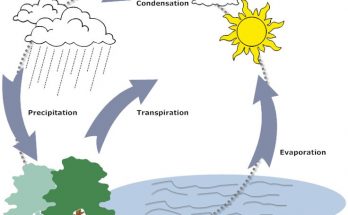This article presents a comprehensive guide to Chapter 1 Components of Food activities designed for Class 6 students. It includes hands-on experiments to identify grains, test for starch, protein, and fats, and demonstrate the water content in fruits and vegetables. These activities aim to educate students on the nutritional value of different foods and the importance of a balanced diet.
Table of Contents
Activity 1- Observing and Identifying the grain item in meals
Activity 1 focuses on observing and identifying the grain item in meals, along with accompanying dishes such as dal (lentils), meat, and vegetables. This activity helps us understand the common components of meals that we eat every day.
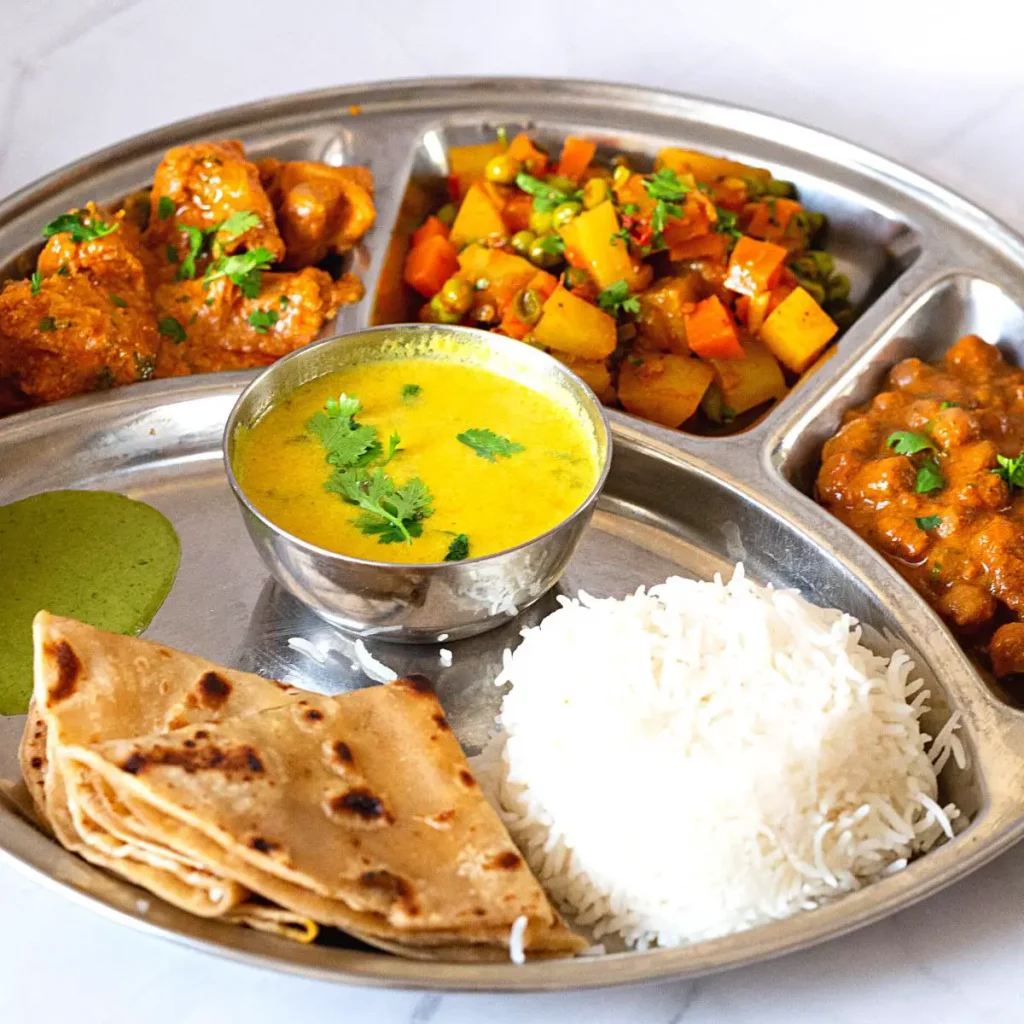
Step 1- Observation
- What to do- Look at different meals, either at home, in school, or in pictures.
- What to look for- Identify the main grain item in each meal. Grains are foods like rice, wheat (used in bread), maize, or millet. These are often the base of the meal and provide energy.
Step 2- Identifying Accompaniments
- Along with the grain, notice what other dishes are served. These could include-
- Dal- A dish made from lentils, peas, or beans, rich in protein.
- Meat- Any variety of meat like chicken, beef, or fish, also high in protein.
- Vegetables– Various kinds of vegetables, each contributing different vitamins, minerals, and fibre.
Purpose of the Activity
- Understanding Meal Components- By identifying these items, you learn about the different parts of a meal and how they come together to provide various nutrients.
- Importance of Variety- This activity also highlights the importance of having different types of food in a meal. Each type (grain, protein source, vegetables) plays a unique role in our health.
Concepts to Understand
- Grains as Energy Sources- Grains are rich in carbohydrates, which give our body energy to perform daily activities.
- Protein for Growth and Repair- Foods like dal and meat are important for building and repairing body tissues.
- Vegetables for Overall Health- They provide vitamins, minerals, and fibre essential for maintaining good health and preventing diseases.
By this activity, students can learn to recognize and appreciate the nutritional value of various meal components, understanding how each contributes to a balanced diet.
Activity 2- Testing for Starch, Protein, and Fats
Activity – Test for Starch
The “Test for Starch” is a simple experiment to find out if a food item contains starch, which is a type of carbohydrate. Starch is important because it’s a major source of energy for our bodies. Here’s how the test works and what it teaches us-
What You Need
- Iodine Solution- A special liquid that can help us identify the presence of starch.
- Food Items- These can be anything you might eat, like a piece of bread, potato, or rice.
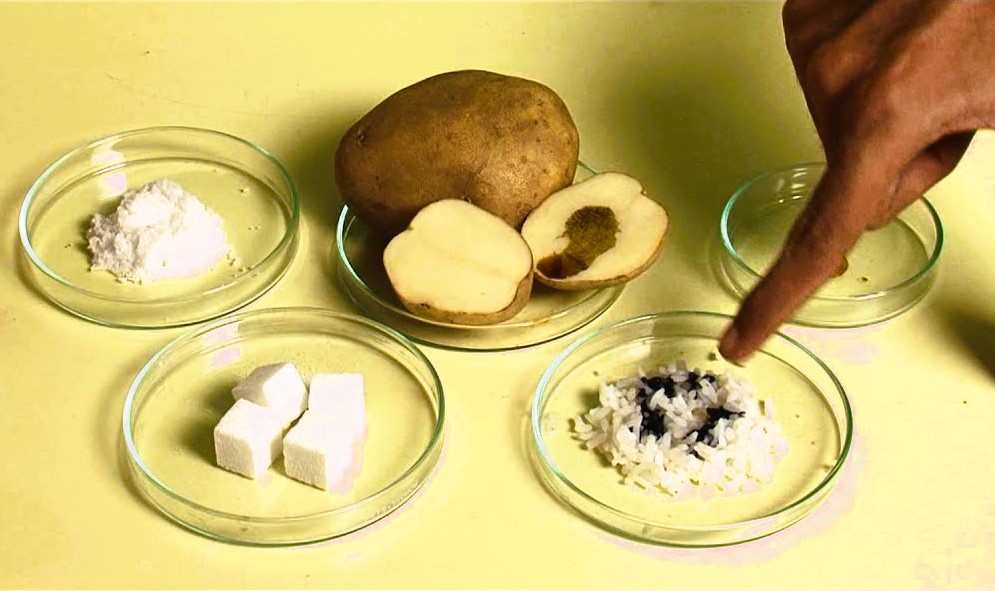
Steps of the Test
- Preparation- Place a small piece of the food item on a plate or a clean surface.
- Application- Put a few drops of iodine solution onto the food item.
- Observation- Watch for any colour change on the food item where the iodine was applied.
What to Look For
- Colour Change- If the part of the food item where you put the iodine turns blue-black, it means starch is present.
- No Colour Change- If there is no colour change, it means there is no starch in the food item.
Why It Happens
- Chemical Reaction- The iodine reacts with the starch present in the food, causing a colour change. This reaction is specific to starch, making iodine a useful indicator.
Importance of the Test
- Identifying Nutrients- This test helps us understand what our food is made of, particularly how much starch it contains.
- Understanding Our Diet- Since starch is a key energy source, knowing which foods have starch can help us make informed decisions about what we eat.
- Learning About Chemical Indicators- The test introduces us to the concept of chemical indicators – substances that show us the presence of other substances through changes like colour shifts.
By performing the Test for Starch, Students can visually see and understand the presence of starch in different foods, emphasising the role of experiments in learning about the nutritional content of our meals.
Activity -Test for Protein
The “Test for Protein” is an experiment designed to find out if certain foods contain proteins, which are essential building blocks for our body. Here’s a detailed explanation of how this test works-
What You Need
- Water- Used to dissolve or mix with the food item.
- Copper Sulphate- A blue chemical that reacts with proteins.
- Caustic Soda (Sodium Hydroxide)- A strong alkaline solution that helps the reaction between copper sulphate and proteins.
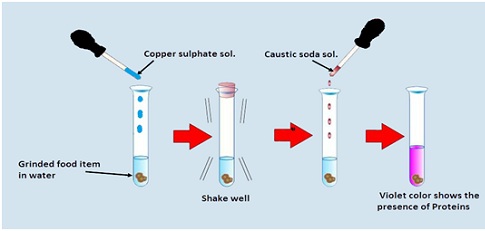
Steps of the Test
- Preparation- Take a small piece of the food item and mash or dissolve it in a little water to make a test solution.
- Adding Chemicals- Add a few drops of caustic soda to the test solution. Then, carefully add a few drops of copper sulphate.
- Observation- Look for any colour change in the solution.
What to Look For
- Colour Change to Violet- If the solution turns violet, it indicates the presence of proteins in the food item.
- No Significant Color Change- If there is no noticeable colour change, it means proteins are likely not present in the food item.
Why It Happens
- Chemical Reaction- Proteins in the food react with caustic soda and copper sulphate. This specific reaction causes the solution to turn violet, indicating proteins are present.
- Role of Copper Sulphate- Copper sulphate acts as an indicator for proteins. When it binds with protein molecules in an alkaline solution (made alkaline by caustic soda), the colour change to violet occurs.
Importance of the Test
- Understanding Nutrients- This test helps us identify proteins in our food, which are crucial for growth, repair, and overall health.
- Educational Value- It introduces the concept of chemical indicators in a practical way, showing how certain chemicals can reveal the presence of specific nutrients in foods.
- Dietary Awareness- Knowing which foods contain proteins can help us make better dietary choices, ensuring we get enough of this vital nutrient.
This test demonstrates the presence of proteins in food through a simple chemical reaction, making it an effective way to learn about the nutritional composition of our meals.
Activity -Test for Fats
The “Test for Fats” is a straightforward experiment to find out if certain foods contain fats, which are an important source of energy for our body. Here’s a step-by-step explanation of this test-
What You Need
- Food Item- Any food you want to test for fat content.
- Piece of Paper- A plain piece of paper, like a brown paper bag or a piece of notebook paper.
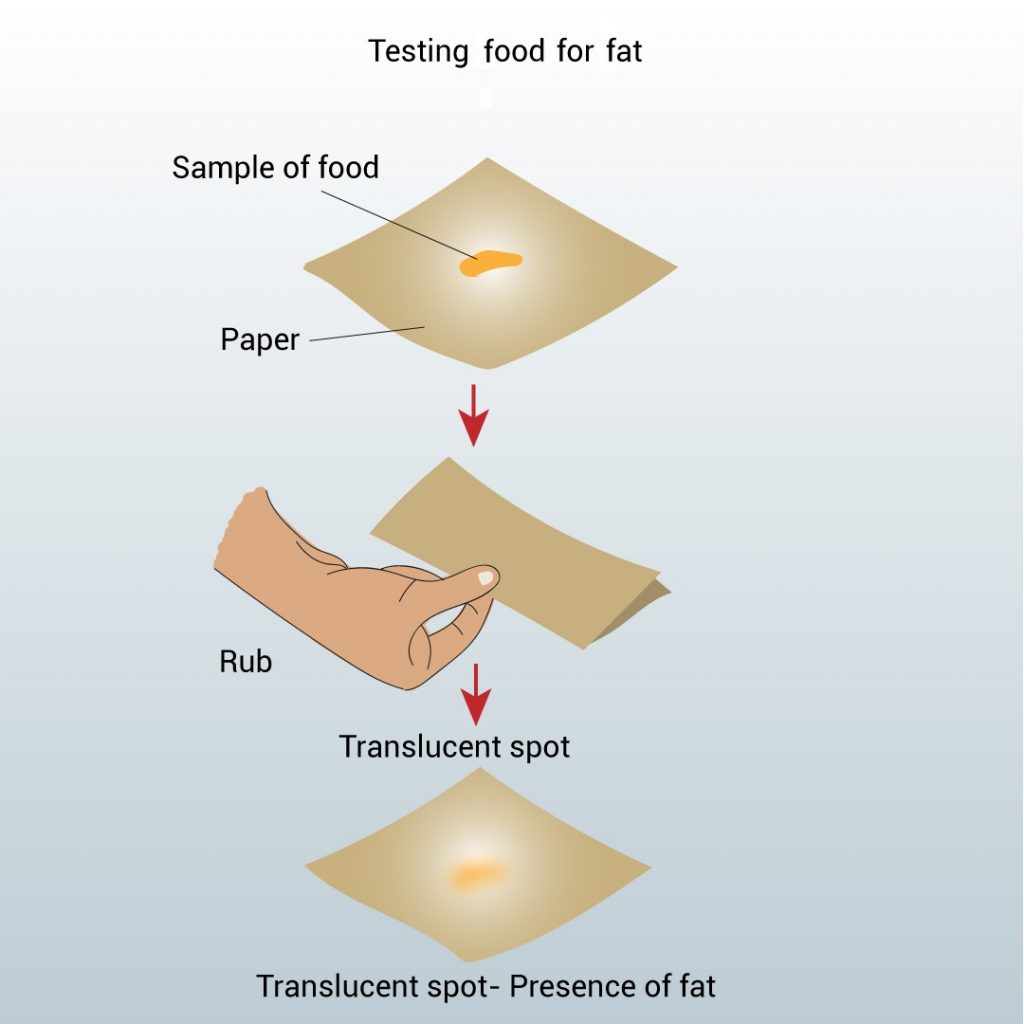
Steps of the Test
- Preparation- Take a small piece of the food item. It can be anything like a nut, a slice of cheese, or a piece of fried food.
- Crushing- Place the food item between two pieces of paper and crush it. You can use your fingers or roll something heavy over it, like a rolling pin.
- Observation- After crushing, carefully remove the food piece and look at the paper.
What to Look For
- Oily Patch- If there’s a translucent (see-through) oily mark on the paper where the food was crushed, it means fats are present in the food.
- No Mark- If there’s no oily mark, then the food likely contains little to no fat.
Why It Happens
- Fat Properties- Fats in food are oily and can soak through paper, leaving a greasy mark. This property of fats is what the test relies on to show their presence.
- Visual Indicator– Unlike the tests for starch and protein, which use chemical reactions, this test uses a visual indicator—the oily patch—to show fat presence.
Importance of the Test
- Easy to Perform- This test doesn’t require any chemicals, making it safe and easy to do even by young learners.
- Understanding Fats- It helps us learn that fats, while needed in our diet for energy and to support cell growth, should be consumed in moderation due to their high calorie content.
- Practical Learning- The test is a hands-on way to understand the concept of fats in foods and can be a fun activity to visually demonstrate nutrition concepts.
By conducting the Test for Fats, we can easily identify the presence of fats in various foods, helping us understand the nutritional content of our meals in a simple and engaging way.
Activity 3: Demonstrating that food materials contain water by cutting fruits or vegetables and observing the moisture released.
Activity 3 is designed to show that food materials, especially fruits and vegetables, contain water. Understanding this concept is crucial because water plays a vital role in the nutrition and freshness of our food. Here’s a detailed explanation of the activity-
What You Need
- Fruits or Vegetables- Any kind of fruit or vegetable, like an apple, orange, cucumber, or tomato.
- Knife- For cutting the fruits or vegetables.
Steps of the Activity
- Selection- Choose a fresh fruit or vegetable.
- Cutting- Carefully cut the fruit or vegetable into slices or halves.
- Observation- Look closely at the cut surface immediately after cutting.
What to Look For
- Moisture Release- You should see droplets of water or a wet surface on the cut area. This moisture indicates the presence of water in the fruit or vegetable.
- Freshness- The amount of water can also tell you how fresh the food is. Fresher foods usually have more visible moisture.
Why It Happens
- Water Content in Foods- Fruits and vegetables naturally contain a lot of water. This water is essential for the plant’s growth and remains in the cells of the fruits and vegetables we eat.
- Cell Structure- When you cut into a fruit or vegetable, you’re cutting through cells that contain water. Once cut, the water inside these cells can seep out, making the cut surface moist.
Importance of the Activity
- Understanding Nutrition- This activity helps us understand that water is a significant component of our food, contributing to its nutritional value and texture.
- Hydration- It also emphasises the role of fruits and vegetables in keeping us hydrated, as they are a good source of water in addition to providing vitamins and minerals.
- Practical Learning- Observing the moisture released from fruits and vegetables is a simple yet effective way to learn about the natural water content in our food.
Through Activity 3, we gain a hands-on understanding of the water content in fruits and vegetables, highlighting the importance of water in our diet and the natural composition of our food.
